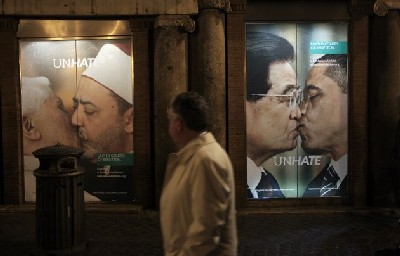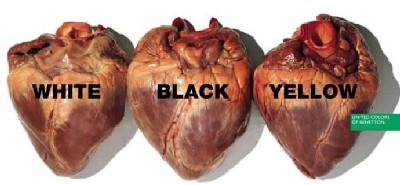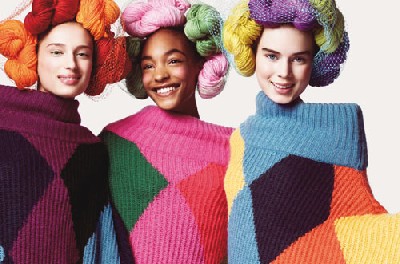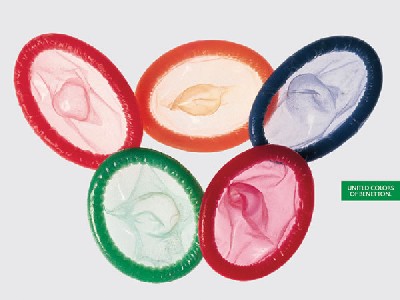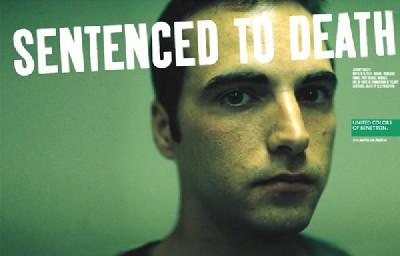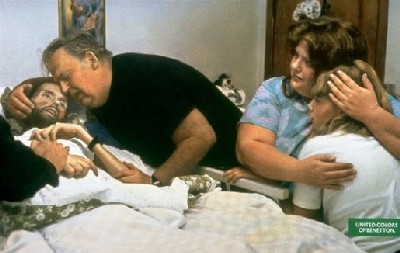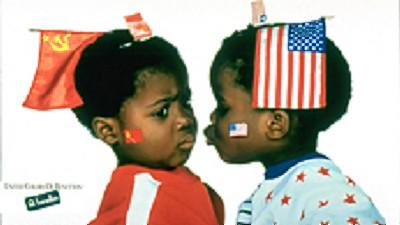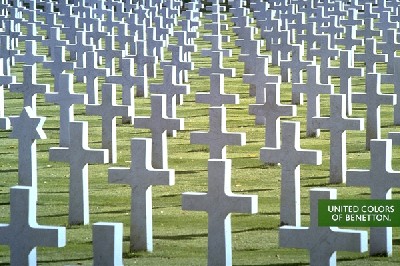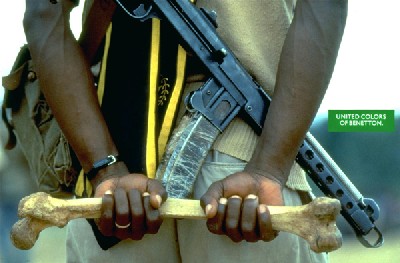 | « Back to article | Print this article |
Benetton's most controversial ads
Marketing brilliance or simply distasteful? This is what you think when you see some of Benetton advertisements. In fact, the Italian clothing company has become synonymous with the term 'shockvertising', a model experimented by a few other clothing designers and upscale product companies like Calvin Klein.
Each time Benetton releases a controversial ad, it is making a statement by pushing a political agenda, or sensitive subjects that are deliberately offensive to some people. In a way, it takes the age-old advertising tactic of challenging reality to its extreme.
Twenty-five years ago, Benetton rode to global fame with its controversial line - All the colors of the world (later the campaign was called United Colors of Benetton) -- and now it's back in focus for it's yet another controversial commercial.
This time Benetton targets the world leaders.
Click NEXT to read more...
Benetton's most controversial ads
The campaign titled 'Unhate' was launched on Wednesday with an aim at promoting tolerance and global love. Contrary to its message, it did evoke some strong reactions.
It features ads showing Pope Benedict XVI kissing a top Egyptian imam. It was withdrawn almost immediately after the Vatican denounced it as an "unacceptable" provocation.
The others ads in the 'Unhate campaign' feature fake photos of half-dozen purported political nemeses in lip-locked embraces, including President Barack Obama and Venezuela's Hugo Chavez, and Israeli Prime Minister Benjamin Netanyahu and Palestinian President Mahmoud Abbas.
Benetton's in-house communications agency Fabrica was behind the work, which involved doctoring the leaders' pictures without their permission.
Click NEXT to read more...
Benetton's most controversial ads
Benetton's communication started grabbing attention across the world since 1980s. Oliviero Toscani was the creative mind behind the controversial ad campaigns that turned Benetton into a household name.
He was Benetton's creative director for 18 years from 1982 to 2000. During this period he created many notorious ads for the brand.
By the height of his success, Toscani was known for his arrogance and drama, but it's worth noting that his first campaign for Benetton in 1982 used teddy bears to model the children's clothing line.
Click NEXT to read more...
Benetton's most controversial ads
By 1984, Toscani's work had already started turning political with the "All the Colors of the World" campaign that focused on young people of different races wearing the company's clothing.
It was the first time such a multicultural group appeared together in a positive light in an Italian advertising.
Click NEXT to read more...
Benetton's most controversial ads
Further, in 1990, Toscani's 'United Colors of Benetton' campaign launched a ten-year span on symbolic, poignant, jarring and controversial ads.
This time round the company had posters of a priest kissing a nun; a bloody baby fresh from the womb; a black stallion mounting a white mare.
Click NEXT to read more...
Benetton's most controversial ads
Other images in this campaign included a colourful mix of condoms spread over a bright background; a white infant suckling a black woman's breast; the exposed pulsing hearts of three different races shown during surgery.
Click NEXT to read more...
Benetton's most controversial ads
Toscani's most controversial ad was the Death Row campaign. Toscani and Benetton were quoted saying the international "We On Death Row" campaign was aimed at drawing attention to the controversy surrounding the use of capital punishment in the US.
Here, the campaign featured close-up portraits of convicted killers. The photos wer stamped with the words "Sentenced to Death" or "We, on Death Row" along with the small green Benetton logo.
Without any surprise, the campaign stirred up a storm of controversy: the state of Missouri sued Toscani and Benetton.
Click NEXT to read more...
Benetton's most controversial ads
Apart from controversial campaigns, Benetton has also produced some distasteful campaigns.
One of them featured a real AIDS patient on his deathbed. It was released at a time when the world was just beginning to come to terms with the horror of HIV.
Click NEXT to read more...
Benetton's most controversial ads
Clearly, Benetton has never been afraid to address highly political themes.
During the Cold War it ran a campaign with a photo of two black children kissing. One of them was wrapped in the Stars and Stripes, the other in the red flag of the Soviet Union.
When the French president Mitterand met his Soviet counterpart Gorbachev in Paris, Benetton used the image to decorate the presidential route along the Champs-Elysees. A bemused Gorbachev is reputed to have asked, 'Who is this Benetton anyway?'
Click NEXT to read more...
Benetton's most controversial ads
More shocking was the 1991 picture of a World War I cemetery in France which created 'unprecedented controversy'.
It featured long rows of crosses symmetrically aligned, and served as a reminder that in wartime nobody wins: beyond uniforms and races and religions, death is the only victory.
Click NEXT to read more...
Benetton's most controversial ads
In 1992, Benetton released a horrifying advertisement showcasing photographer Patrick Robert's image of a Liberian soldier with a kalashnikov, holding a human thigh bone behind his back.
The questionable photograph brought up questions about colonialism, racism and cultural poverty.

